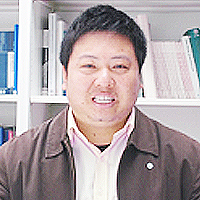Immune-mediated neuropathy related to bortezomib in a patient with multiple myeloma
Published on: 3rd January, 2022
Treatment options in multiple myeloma (MM) based on novel agents are often limited by dose-related neurotoxicity. Bortezomib, a highly active reversible proteasome inhibitor, frequently causes peripheral neuropathy (PN). Bortezomib-induced PN (BIPN) is characterized by a length-dependent, sensory, axonal polyneuropathy (PNP) with predominant small fiber-affection. Following dose reduction or drug discontinuation, BIPN resolves within 3-4 months in the majority of patients. The pathophysiological mechanisms of BIPN are unclear. Rare cases of a severe demyelinating or mixed BIPN with prominent motor involvement have been attributed to autoimmune or inflammatory reactions. A case report, including nerve pathology, is presented of a 59-year-old man with stage III IgG-κ MM who was treated with bortezomib on the occurrence of progressive disease. After the fourth cycle, he developed a painful distal symmetric sensory PNP followed by gait instability and muscle weakness increasing over 3 months despite early cessation of bortezomib.Neurological examination revealed a distal flaccid tetraparesis mainly of the lower limbs with sensory loss and severe ataxia, electrophysiological features of a mixed axonal-demyelinating PNP, and pathomorphological evidence of neuritis. Steroid treatment was initiated, and partial recovery of the neurological symptoms within 6 months was observed. While a neurotoxic effect may explain the initial distal sensory disturbances, the worsening of neurological dysfunction after bortezomib withdrawal and the clinical pattern with steroid-responsive muscle weakness predominantly of the legs are consistent with an immune-mediated mechanism. This is in line with the sural nerve biopsy findings. Toxic BIPN followed by an immune-mediated BIPN in the same patient has not been reported before.
Idiopathic progressive polyneuropathy presented with frequently acute pulmonary oedema: a case report
Published on: 29th September, 2022
Neuropathy is when nerve damage interferes with the functioning of the peripheral nervous system (PNS). When the cause can’t be determined, it’s called idiopathic neuropathy(Idiopathic neuropathy, now designated as chronic idiopathic axonal polyneuropathy (CIAP).There are three kinds of nerves within the PNS. Sensory nerves relay messages from the sense organs to the brain. This allows sensations of temperature and touch. Motor nerves transmit signals from the brain to the muscles. This helps the brain control the muscles. Autonomic nerves control body functions like heart rate, breathing, and digestion.Damage to nerve cells can affect how the PNS communicates with the rest of the body. Symptoms can include numbness, pain, and balance issues.It’s called acute neuropathy when symptoms develop suddenly. Alternately, it’s called chronic neuropathy when symptoms start slowly and increase over time. Diagnosis involves physical examination and review of medical history. Diagnostic testing may include blood tests, nerve testing, and imaging tests.There is no cure for idiopathic neuropathy. Treatments including medication, physical therapy, and lifestyle modifications can help you function and feel better.We report a case of idiopathic polyneuropathy presented with frequent acute pulmonary edema for a year.
Effect of Lower Extremity Training in Diabetic Peripheral Neuropathy
Published on: 12th February, 2024
Background: Diabetic peripheral neuropathy is a symmetrical length-dependent sensorimotor polyneuropathy due to chronic hyperglycemia. The World Health Organization (WHO) identified diabetes as a major global health concern. Diabetic neuropathy is characterized by motor dysfunctions (weakness and atrophy) especially at the distal muscles of lower limbs, and impaired dynamic muscular control in type 2 diabetes patients. Symptoms start in a distal-to proximal pattern in the feet, and ankle and proximally in the hip and knee for both flexors and extensors. Proximal muscle weakness affects postural stability. Dorsiflexor weakness causes increased hip, knee flexion and metatarsophalangeal extension in the initial swing whereas weakness in plantar flexors causes a greater amount of hip and knee flexion during the stance phase.Methodology: 34 subjects with Diabetic Peripheral Neuropathy who fulfilled all the inclusion criteria were recruited for the study. Ethical standards have been maintained and informed consent was taken. Subjects were randomly assigned by lottery method into two groups, intervention, and control with 17 in each. Since it is a single blinded study subjects were blinded about the interventions provided. Pre and post-test scores were taken before and after 4 weeks using Surface Electromyography (sEMG), Kinovea Software, Functional Gait Assessment (FGA) and Short Form -36 (SF-36).Results: The pre and post-score values of the kinematics of gait, Functional Gait Assessment, and Short Form - 36 were analyzed using a Paired t-test and Wilcoxon Signed Rank test within the group analysis, Mann- Whitney U test and Independent t-test for between the group analysis. Both groups displayed notable variations, whereas the intervention group exhibited more significant differences (p < 0.05). Thus, it can be inferred that lower extremity training significantly improves gait kinematics and quality of life in diabetic neuropathy.Conclusion: Lower extremity training is effective in improving the kinematics of gait and quality of life in diabetic neuropathy.
















